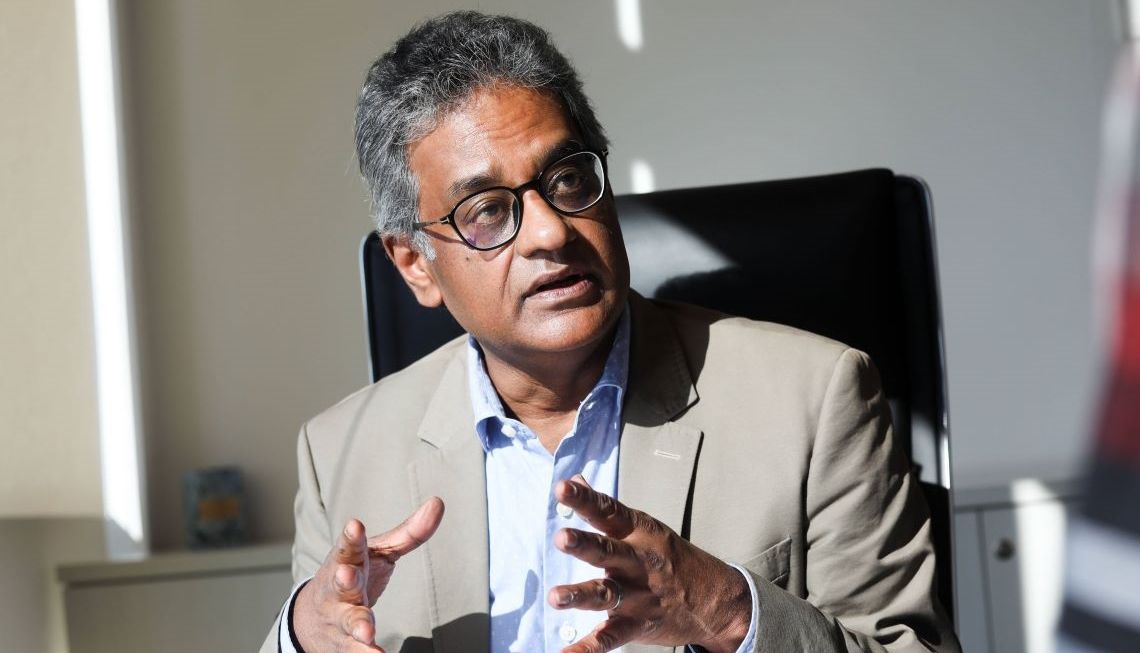How drones are taking off in Malaysia
By Jaz Low
Interview with Gopi Ganesalingam, Chief Digital Industry Officer at Malaysia Digital Economy Corporation.

MDEC’s MyDroneTech Initiative aims to increase the adoption of dronetech in Malaysia. It helps local drone companies test their products, advocate for supportive policies, and develop tech talent to analyse drone-captured data.
Gopi Ganesalingam, MDEC’s Chief Digital Industry Officer, shares how the organisation aspires to scale dronetech to greater heights.
Empowering the agriculture sector with dronetech
Malaysia has begun sowing the seeds for drone agritech. MDEC helps farmers adopt smart farming solutions by connecting them with technology companies and providing them with funding.
For instance, fruit farm Selangor Fruit Valley uses the 3D mapping and data imaging functions of drones to perform real-time soil and field analysis. This helps farmers to identify which plot of land is best for planting, irrigation, and fertilisation so that they can grow the healthiest crops.
Drones equipped with near-infrared light can detect pests and plant diseases. This method is more efficient than the traditional way of assessing plant health, where farmers drove their tractors around and inspected crop conditions stalk by stalk. The project yielded encouraging results, improving farmer productivity and income by over 20 per cent, Gopi shares.
“Malaysia has always been a farming nation and now, more than ever, dronetech is becoming more essential in addressing food security,” Gopi says. “We will continue to strive and improve the livelihoods of the many farmers across the nation,” he emphasises.
Effective disaster management with dronetech
Drones can also deliver emergency supplies to remote locations and disaster areas.
Malaysia delivered medicine and food supplies to flood victims in Kuala Langat, Selangor with drones in December 2021. As the floods displaced thousands from their homes and inundated roads to medical facilities, drones helped people to get much-needed resources in time.
MDEC has worked with drone companies to predict natural disasters as well, Gopi says. Frequent monitoring allows these unmanned vehicles to predict when and where the next earthquake will happen. For example, drones can fly into the ocean and scrutinise the seafloor in earthquake zones.
“Drones are able to cover areas that a normal human being cannot reach,” Gopi shares. “They are also very small, subtle, and can access remote locations quickly.”
Battling the pandemic with DroneTech
Over the past two years, drones also played a part in mitigating the pandemic situation in Malaysia.
The National Security Council in Malaysia and the Royal Malaysia Police used drones to regulate citizen movement for public safety. Drones performed aerial mapping of populations to track where there were large concentrations of people. “This was helpful during lockdown when police had to survey the whereabouts of people more closely,” Gopi notes.
The Ministry of Health used drones to sanitise outdoor public spaces. Drones carried out large-scale misting of areas with disinfectants, which helped to keep the environment clean.
The ministry also used drones to transport Covid-19 vaccines and medical supplies to remote areas. Drones can access places that are difficult to reach and protect more people.
Malaysia’s main railway operator KTMB used drones to review and monitor locomotive trip operations too. Aside from ensuring smooth train journeys, drones surveyed train conditions and identified areas that needed repair or replacement. This allowed KTMB to maintain their wagons with ease.
Professionals and policies to increase drone adoption
Drones are chief enablers of change. But more importantly, making sense of the data that these tools capture will help to speed up the growth of this industry. MDEC is working with public and private organisations alike to nurture a pool of data professionals who are skilled in analysing drone data.
“We want to upskill and reskill those working in digital tech-based jobs,” Gopi comments. MDEC’s Digital Skills Training Directory serves as a one-stop guide for this purpose. The directory offers 250 courses that cover areas including data science, cybersecurity, and software development.
The drone industry has great potential to further job creation as there is an ongoing demand for drone-related professions like drone pilots. The integration of drones with emerging technologies such as Internet of Things, Big Data Analysis, and AI has created new applications across various sectors.
Additionally, rules and regulations need to be up to date with technology. “If we don’t have forward-looking policies, we cannot implement dronetech successfully,” Gopi highlights.
“The state of Cyberjaya is supposed to be a testbed for drones, but ironically, there are many restrictions on flying drones there,” he shares.
MDEC is working with regulatory bodies Futurise and the National Technology and Innovation Sandbox to remove the red tape so companies can introduce drones into the market without facing excessive restrictions.
Meanwhile, SME Corporation Malaysia and MDEC are embarking on an initiative to scale dronetech adoption across key economic sectors. The agencies will embark on 10 additional dronetech projects across key economic sectors such as agriculture, healthcare, and transportation in 2022.
Malaysia currently has the biggest drone market in ASEAN, but Gopi believes that the organisation cannot rest on its laurels. MDEC will continue to work with local drone companies, break down policy barriers, and invest in digital tech talent for the future of this sector.